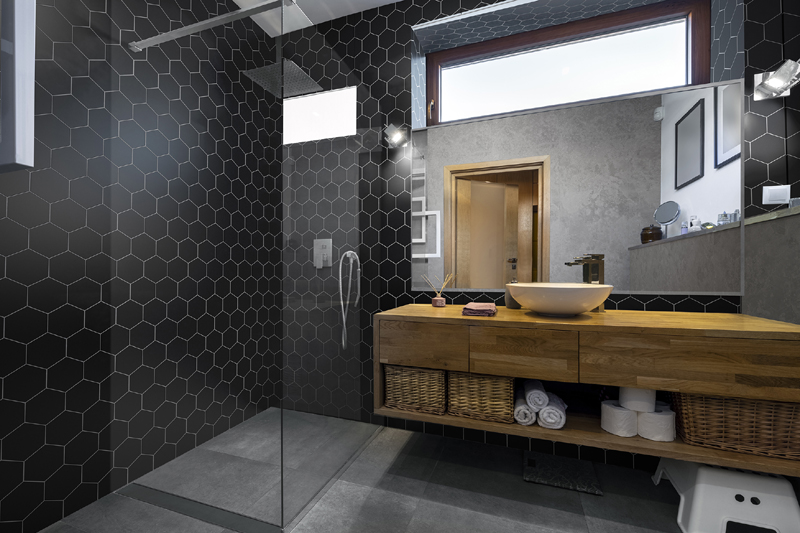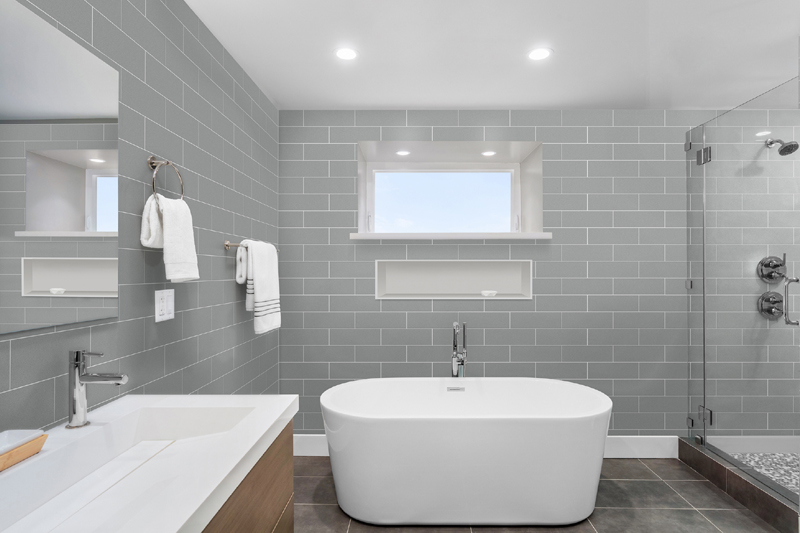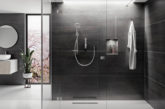
Despite tiles often being the ‘go to’ choice for bathroom installations, waterproof wall panels are increasingly seen as offering an exciting alternative. Fibo MD Scott Beattie explores the benefits of waterproof wall panels and their role in modern-day bathrooms.
When it comes to bathroom installations, whether it’s a new-build or a renovation project, tiles are perhaps the first wall-covering solution that comes to mind, being the traditional ‘go to’ choice. However, automatically turning to tiles could mean that your customers are missing out on a solution that is perhaps more suited to their requirements.
And while wall panels may once have been seen as a cheap, out-dated and unattractive option, thanks to new developments and innovation the wall panel market has had a significant face-lift and upgrade over recent years. Now, with a wide range of both traditional and contemporary colours and styles available, waterproof wall panels can be the key to delivering the stunning bathroom space that the end-client wants, while also offering numerous installation benefits for your customer.
Commonly manufactured from a timber core and bonded with high pressure laminates, high-quality wall panels will also feature a discrete, yet robust, waterproof tongue and groove locking system for a seamless finish. Being made from wood, wall panels are far more lightweight and easier to handle than their tile alternative, without having to worry about them chipping or cracking during storage or transport — good news for both you and your customers.
Wall panels can also be far simpler to install, only requiring basic carpentry skills and tools, making them a more accessible building product to more tradespeople. As if that wasn’t enough, wall panels are ideal for both refurbishment and new build projects, able to be fitted directly onto existing walls — including tiles — or stud partitioning.

Style and substance
Of course, the look and finish of a product is perhaps just as important as any install benefits. Indeed, with increasing market competition, delivering on the ideal of a stunning and contemporary bathroom space has perhaps never been so important.
Here, again, wall panels can deliver. With such a wide range of contemporary and traditional colours and styles available — perhaps even more so than with traditional tiles — your customers will be spoiled for choice.
And for those who aren’t quite ready to move completely away from tiles there’s no need to compromise, with a variety of tile-effect panels available that feature imitation grout lines, creating a realistic look. Fibo, for instance, takes this one step further by 3D routering the grout lines in (as well as using them to disguise the panel joints) which means that you’ll really struggle to tell they are not tiles once installed.
With six collections, four of which feature the realistic tile-effect, Fibo can offer an impressive selection of colours and styles from block colours, including Olive Green and Light Sand, to contemporary effects such as Cracked Cement, White Marble and Rough Wood. Fibo’s most recent addition — the Urban Collection — offers the very latest in bathroom interior trends, featuring the contemporary Metro Brick, classic Herringbone and bold, geometric Hexagonal.
Product performance
Another thing to consider is the individual performance and guarantees of a product. Due to their timber construction, wall panels can be incredibly strong, long-lasting and durable, as well as being very easy to clean and maintain. The absence of grout brings with it its own longevity benefits too, as this can be a common problem area with tiles when they fail and deteriorate.
In terms of product guarantees, a 10-year warranty is perhaps the most common within the wall panel market. However, some manufacturers, including Fibo, are so confident in the performance of their wall panel systems that they offer a 25-year warranty — providing added assurances of the product quality.
It’s clear that waterproof wall panels have a lot to offer, both in terms of installation and durability benefits, as well as the final finished appearance too. While tiles have long been the ‘go to’ pick for bathroom installations, times are changing.












